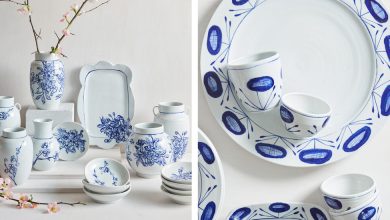Men’s Wear Hustles to Stay in the Game

Punching back — against long odds, a decimated retail landscape and, of course, a pandemic — a bunch of doughty men’s wear designers proved last week that you can never count creativity out. Supported by day jobs and side hustles, aided by parental loans and the generosity of friends, eight indies mounted collections that, if not likely to alter the course of contemporary fashion, fought to keep New York City in the game.
“This is a passion,” the designer Nicholas Raefski, who trained as an economist, said during his sophomore presentation at New York Men’s Day on Friday. “I had to do fashion. If I really wanted to make money, I’d have gone into banking.”
Visitors to this scrappy assemblage of presentations, held in the light-flooded Starrett-Lehigh building in Chelsea, always hope for a fresh discovery, some surge of creative excitement. Supercharging those expectations are the stirring views that fill the windows of this Modernist landmark, the gunmetal Hudson right there to remind you of the mighty currents, metaphorical and otherwise, that power the city.
Barely a decade ago, the New York men’s wear presentations merited their own dedicated week with all the attendant ballyhoo, parties, corporate sponsorships and street-style photographers trawling for Instagram fodder. People turned out in droves, disporting themselves in outlandish costumes that made the rest of us look like normcore droogs. Plenty of schlock was produced during those weeks, but they also gave a platform to future stars, people like Willy Chavarria and Emily Bode.
And the hope remains that a designer like, say, Aaron Potts may find a way to quit his day job and take his collections mainstream. His talent merits that break. Subversive of both gender and racial expectations, the APOTTS collections are often rooted in obscure byways of Black history and experience. He has created collections inspired by the Sun Ra Arkestra, the designer Willi Smith and racially freighted topsy-turvy dolls.
Now crowding 50, Mr. Potts supports himself designing blameless separates for Toccin, a label one department store website characterizes as providing clothes that are “work appropriate yet ready for weekend celebrations.” In sharp contrast, APOTTS, like many other NYMD labels, remains a “passion project.”
His specific passion this season: an exploration of the color black, as rendered in fabrications as diverse as boiled wool, faux patent leather, sports mesh and knit faux suede. Work appropriate they were not, unless perhaps you serve as the personal assistant to the elder of some secret cult. Trailing tendrils of organza tended to augment the otherworldly effect, as did a few odd dashes of color — Crayola “blush” or a shade of orange inspired by one model’s nimbus of fiery red hair.
That Mr. Potts manages to conjure poetry on a shoestring (his models worked for very little money and his “sound system” was a boom box) argues for an angel to come along and pluck him out of commercial limbo. “I’m still doing it in my hustler way, waiting for my Robert Duffy to come along,” the designer said, referring to the business partner credited with putting Marc Jacobs in serious business.
New York hustle only gets you so far in a town where a tuna sandwich from a coffee shop costs $16. And, while London, Milan, Florence and Paris continue to mount relatively robust fashion weeks, at least partly underwritten by trade groups or local government, New York barely ekes out a few ragtag presentations. Mr. Potts and his cohort deserve more and better.
It is worth considering how someone like the 24-year-old designer Tristan Detwiler, whose patchwork suit from an early STAN collection was snapped up for exhibition at the Met, could benefit from financial support beyond that provided by his parents as he expands his explorations past patchwork and attempts to scale his business by mining rich veins of fabric deadstock.
Radically shifting his target demographic from surfers like himself to an older but no less fashionable consumer, Mr. Detwiler presented a tight collection he stitched himself and that was inspired by his paternal grandfather, who worked as a salesman at Kodak for 45 years. In an oddly on-trend gesture, he showed his recycled textiles on vintage models, people like the beautiful Halstonette Alva Chinn and the perennial GQ cover boy Tony Spinelli, both still working.
Perhaps the greatest value of fashion week is as a platform. Lacking a backdrop, framing or a rubric, randomness threatens to overtake the designs of a real talent like Stephen Mikhail, whose severely tailored (put that cookie down immediately) Atelier Cillian collection was inspired, he said, by Sir Francis Dashwood’s bacchanalian 18th-century Hellfire Club. You need a real life stage to properly survey and appreciate Clara Son’s polished debut, which featured trained dancers and heavily ruched clothes based on her investigations into the life cycle of the moth. Without a show, someone like Nicholas Raefksi would have little luck drawing attention to his witty riffs on high school archetypes.
Titled “Meet Me by the Bleachers,” the collection was a mash-up of clothes Mr. Raefski, 25, associates with ’70s hippies, jocks, punks and nerds, he said. (Fetishistic borrowings of details, like a patch pocket based on one in Vivienne Westwood’s 1991 “Cut and Slash” collection, made it pretty clear to which group Mr. Raefski belonged.)
The Raefski collection interpreted that long-ago decade loosely and, most notably, with a quilted velour track suit in Harvey Wallbanger colors. It was the sort of get-up you half hope would catch on widely and supplant the cascade of penitentiary sweatshirts and rumpled pullovers at the daily Zoom.
The suit was worn by a 20-year-old model, Jacob Marley, over a graphic T-shirt that featured a full-face graphic of Farrah Fawcett Majors. Asked whether he had ever heard of the woman whose face he was wearing — once considered among the most famous beauties on the planet — he shrugged.
“Farrah Fawcett?” Mr. Marley said. “I have no idea who that is.”





